S EA at
MAERSK to give 12.500 seafarers more influence on their work 04

Here are the winners of the FIT4SEA 2022 competition 10
Do you know the code numbers of chemicals? 14
Photo competition: See all the winners 18








MAERSK to give 12.500 seafarers more influence on their work 04

Here are the winners of the FIT4SEA 2022 competition 10
Do you know the code numbers of chemicals? 14
Photo competition: See all the winners 18







The culture and way of working on MAERSK'S container ships worldwide are changing. Less hierarchy and more involvement will strengthen seafarers' influence on work tasks and safety on board. But how do you get all 12,500 seafarers to participate? SEA HEALTH & WELFARE spoke to Aslak Ross from A.P. MOLLER - MAERSK about the significant changes currently being rolled out in the company, which is the world's second-largest container shipping company.
By Troels Leth, SEA HEALTH & WELFAREA significant building renovation is underway at A.P. MOLLER - MAERSK'S head office in Copenhagen when SEA HEALTH & WELFARE meets Aslak Ross, who at the time is Head of Maritime Standards & Designated Person Ashore at MAERSK. We have to go to the basement to get to the elevator that takes us to the 4th floor.
The floor is newly renovated and decorated in warm colors, and employees sit in one large office space with meeting rooms of varying sizes scattered around the floor. One of the purposes of open-plan offices is to create spaces for collaboration and knowledge sharing more informally and less hierarchically.
The layout at the head office is a good example of what is also happening on the company's 300 or so container ships and offices around the world - a cultural change is underway.
"As a shipping company, we want to involve all seafarers on our ships to a greater extent in the planning and execution of tasks on board. We want to create better opportunities for everyone to bring their knowledge forward and be heard so the crew can find the best and safest solutions together. Instead of officers just giving messages at the morning meeting, we want to focus on more dialogue about the tasks. The seafarers must know that they are welcome to stop if they are in doubt about a task, and they should not be in doubt about who to ask for advice. Similarly, we will emphasize evaluation so that everyone learns from what went well and what went not so well," says Aslak Ross.
Aslak Ross joined MAERSK as a cadet almost 30 years ago and has a good insight into the challenges and opportunities of life
at sea. He sailed as an AB, deck officer, and engineer before going ashore and holding positions as a teacher and quality manager at Kogtved Maritime Academy. He was later attached to the internal audit department.
Before joining APM TERMINALS as Head of Safety and Resilience on March 1, 2023, he was Head of Marine Standards & Designated Person Ashore for over 11 years. He was responsible for HSSEQ Management, control of safety and prevention on the fleet of container ships, and implementation and supervision of MAERSK'S safety management system.
He acknowledges that the desired cultural change will place greater demands on individual seafarers than they have been used to.
"With greater involvement in the planning and execution of the tasks also comes
greater responsibility, which the individual seafarer must take on. Everyone on board must contribute and ensure that we carry out the tasks in the best possible way. We want to avoid expecting the office or the captain to tell you how to do things. If you are not prepared to get involved, you will be irrelevant in the future," says Aslak Ross.
One of the measures that have been put into play to create cultural change is to train the top 4 management on the container ships – captains, chief engineers, chief mates, and first mates – in the new management tool 'Briefing-Debriefing.'
"The tool is about management looking at each employee as a person with knowledge and potential that we can develop. Therefore, managers must
ensure that employees, regardless of their different experiences, knowledge, and cultural background, are included in the dialogue about the tasks - both the preparation and the evaluation," says Aslak Ross.

The training takes place virtually and is provided by three chiefofficers. They are trained to teach and know the theory behind the management tool.
"We use the three chief officers because they know everything about the work on board. So, it is easy for them to establish a good dialogue with the participants about challenges and solutions. We get very positive feedback on the training. 99% of the participants we have asked state that they can translate the knowledge and instruction they receive in training into something they can use on the ship," says Aslak Ross.
As a shipping company, we want to involve all seafarers on our ships to a greater extent in the planning and execution of tasks on board. We want to create better opportunities for everyone to bring their knowledge forward and be heard so the crew can find the best and safest solutions together.The seafarers on 300 MAERSK ships will have more influence on the planning and execution of tasks on board. This will place greater demands on individual seafarers. So says Aslak Ross from MAERSK.

Until recently, Aslak Ross was Head of Marine Standards & Designated Person Ashore in MAERSK. On March 1st this year, he joined APM TERMINALS as Head of Safety and Resilience. Aslak Ross has been a member of SEA HEALTH & WELFARE's Board of Directors for five years but has resigned from the position in connection with his job change.
Part of the training is for managers to understand the value of working with and involving many different people.
"You can't classify a person by country or gender. You have to get to know people and understand what drives them. That's why it also requires effort from our leaders. They must be ready to give something of themselves. At the same time, they must continue to be the authority that makes the big, important decisions. There will continue to be a chain of command," says Aslak Ross.
Senior officers receive a whole package of tools from the virtual training to take back to the ships and implement among the crew.
Another element in strengthening safety on board is the 1-day 'Safety Behavior' workshop for the enlisted seafarers. This course is given ashore to the enlisted seafarers. This particular tool aims to initiate a dialogue on how everyone on board can have a voice in planning tasks so that they are carried out in the most appropriate and safe way and to align expectations for safety work on board.
"Safety work on board takes place on a day-to-day basis, not in the Safety
Committee, and we want to ensure seafarers are more involved. It is also a recognition that more can be done to strengthen the psychological safety of crews. Specifically, it is about senior officers involving them more in safety planning and execution based on the philosophy that they are the ones out there who know best," says Aslak Ross.
About half of the approximately 2,500 senior officers have so far been trained in the management tool 'BriefingDebriefing.'
The above-mentioned 'Briefing-Debriefing' and 'Safety behavior' projects are just two of many projects, all aimed at supporting the company's employees and managers in their active role in the cultural change.
"We know that our transformation will take years. For example, fleet managers will participate in a leadership program that includes four days of face-to-face training in Denmark or India over the next two years," says Aslak Ross.
Aslak Ross expects the new management tool to help increase employee involvement and reduce hierarchy. Overall, the expectation is that it will have a significant impact on the well-being of seafarers.
"When there is good respect, dialogue, and constructive and open cooperation across the board, we see much greater employee satisfaction. Creating space for dialog and trust also leads to increased commitment. The whole task is about creating engagement, and employees who feel a high level of trust also work better and more safely," says Aslak Ross.
He points out that it is also about future recruitment and inviting new employees into a workplace where differences are respected, and people see themselves as part of something bigger.
"In ten years, we at MAERSK will see a much closer fusion of employees on the ships and between ships and offices, where everyone sees themselves as part of something bigger," says Aslak Ross.
The training of the approximately 2,500 senior officers and the involvement of the enlisted seafarers are elements of a broader effort in the MAERSK GROUP. The shore-based employees with contact with the ships will undergo similar training in cross-collaboration.
"In this way, we are creating a new and closer working environment that reflects that those on land and those at sea are one team. This will both develop us as a shipping company and strengthen our efforts to become even better at moving goods from A to B," says Aslak Ross.
MAERSK is working to encourage even more women to choose a career at sea. An ambitious new recruitment plan, the Women Cadet Program, launched in 2022 in India, aims to increase the number of women who take a maritime education and subsequently get a job with MAERSK.
By Troels Leth, SEA HEALTH & WELFAREA.P. MOLLER - MAERSK wants more female cadets on container ships. Therefore, the Women Cadet Program recruitment plan was launched in 2022, with the goal that by 2027, 50% of all new cadets in MAERSK will be women.
To meet the target, MAERSK will improve the existing training environment to support and affirm an inclusive culture early in the career choice. It must be made more equal and psychologically safe for women to be part of.
"We mean it when we take women's opportunities and conditions seriously. Maersk takes responsibility for helping to create the right framework, and we will invest in strengthening women's opportunities in the maritime sector," says Aslak Ross, Head of Safety and Resilience at APM TERMINALS
Maersk is partnering with AMET University in Chennai on the cadet program for women. To ensure equality and safety, Maersk will specifically take care of the female students in the cadet program with scheduled visits to the university, one-on-one meetings with the cadets, and direct contact with MAERSK'S representatives in India.
Women make up 0.5% of the total number of Indian seafarers today. The job market is effectively nonexistent in India, but there is vast potential.
"For example, our team managed to recruit 82 female cadets and four female officers in India in 2022, compared to 16 female seafarers from India in 2021," says Aslak Ross.
MAERSK'S container ships currently employ 350 female crew members, representing 2.5-3% of all employees.
“We can improve this gender imbalance if the entire industry makes an effort to provide young women and their parents with proper career advice at the right age,” says Aslak Ross and continues:
"It is also about promoting the right academic education, creating job opportunities, ensuring a safe and healthy working environment at sea, and securing good long-term employment for women.”

Shipping companies worldwide have had problems with harassment and bullying, including sexual assault against women. MAERSK, one of the world's largest shipping companies, has also had severe cases. To ensure that it is safe for everyone to work on board its ships, the company has launched several initiatives to change the culture on board and create a safe workplace for everyone.
By Troels Leth, SEA HEALTH & WELFAREHardly anyone knows how to change the workplace culture with 12,500 employees across 300 ships worldwide. But A.P. MOLLER - MAERSK is trying because it has to be safe for all its employees to go to work.
The effort began in 2021 and takes place on several levels - from awareness-raising campaigns and leadership development to excellent and fair grievance procedures. There is a strong focus on succeeding with the cultural change, which the seafarers and the shipping company will work on for several years.
"Changing a culture is a joint organizational movement that requires that our employees and colleagues participate in a dialogue on the issues. We need to build a common language, and we are well underway on that journey," says Aslak Ross, who recently took the Head of Safety and Resilience position at APM TERMINALS.
Until March 1 this year, he was Head of Marine Standards & Designated Person Ashore at MAERSK. He was responsible
for HSSEQ management and control of safety and prevention on the company's approximately 300 container ships.
"First, we are reviewing our complaints procedures to ensure they are transparent and fair. Anyone who wants to raise a case should experience the whole grievance process as simple and good," he states.
MAERSK is mainly focused on communication and is currently interviewing all seafarers, including asking them about their experiences working for Maersk.
"We have also given presentations to our cadets and will also develop a culture program for our cadet programs during 2023 - just as we talk about our culture in all professional contexts internally in the organization," says Aslak Ross.
In addition, MAERSK has launched the 'On Our Respect Radar' campaign, which is a part awareness campaign and part training.
"Our leaders must lead the way and be role models for the culture we want. That's why they have all been in facilitated anti-harassment training this fall. In January this year, the training of all seafarers began, which means that all 12,500 seagoing employees are currently undergoing scenario-based anti-harassment training. During the training, they discuss scenarios and decide what to do as a team in a given situation," says Aslak Ross.
The campaign's core is to ensure that all seafarers on board the company's ships know what constitutes sexual harassment, bullying, and discrimination and what to do if they experience or witness it themselves. By June 2023, the plan is for everyone to have completed the training course.
"The transformation will also focus on retention and recruitment of employees, including more women. And of course, we will also ensure that all our ships, new and old, meet everyone's needs, for example, in terms of personal protective equipment and an inclusive approach to accommodation when we build new ships," says Aslak Ross.
MAERSK supports the recently completed survey on harassment and bullying that all seafarers on Danish-flagged ships received earlier this year. The University of Southern Denmark is conducting the anonymous survey on behalf of the Danish Maritime Authority.
"The survey helps generate important knowledge that is hugely relevant for us at MAERSK and other maritime players. We fully support its implementation and have made sure to push it out to as many seafarers as possible. We have encouraged everyone to participate through our internal communication channels," Aslak Ross from MAERSK emphasizes.
The final report will be available on the Ministry of Industry's website in mid-2023.

In 2022, nearly 2,000 seafarers and 550 ships took part in the FIT4SEA competition, in one or more of the six disciplines. Now the winners of the individual and ship competitions have been found!
Health Promotion Consultant Anna Tofte Rasmussen is happy with the effort the FIT4SEA participants delivered in 2022.
"These are very great results delivered by all participants, and I am proud that even more sailors chose to participate in 2022 and train in one or more disciplines. I know it can be hard to train regularly and sometimes difficult to find the time. That's why I'm impressed by the effort you’ve
put into the training. Congratulations to the winners, and enjoy your training," says Anna Tofte Rasmussen.
Every month more seafarers sign up for FIT4SEA. Therefore, she expects the training results to be even better in 2023.
"It's great that you are helping to inspire colleagues on board to work out. If you have a colleague on board who would like
to join in, show them how to sign up for FIT4SEA. Good training," says Anna Tofte Rasmussen.
The individual winners have been notified. One of them is Artur Łabacz, who came in first place in the cycling discipline after covering a whopping 19,191 km in 2022. That's the equivalent of cycling halfway around the equator!
Artur Łabacz, the winner of the cycling competition, signed up for FIT4SEA in 2021.
"I am participating in FIT4SEA because I have already been cycling since 2014. I have a friend on board who also uses FIT4SEA," says Artur Łabacz.
He doesn't dare to predict if he will win again this year.
"I am ready to make an even better result, and I certainly hope I win again," says Artur Łabacz.
Artur Łabacz keeps his exercise bike in his cabin because there is no fitness room on the ship.

Running: 228.109 km.
Equivalent to running about 4 times around Australia'. (59,681 km)
Cycling: 397.935 km.
Roughly equivalent to the distance from Earth to the Moon (384,399 km on average).
20 22
Running: ESVAGT DON: Four crew members ran an average of 1,054 km. (4,217 km)
Cycling: MONA SWAN: Three crew members each cycled an average of 3,423 km. (10,269 km)
Rowing: STENA FORETELLER: Four crew members each rowed an average of 1,141 km. (4,565 km)
Weight training: DANA: Four crew members have each done an average of 221 hours and 7 minutes of weight training. (884 hours and 30 minutes)
Cross: SANTA RITA: Four crew members each cross-trained an average of 601 km. (2,404 km)
Walk: BERGENSFJORD:
11 crew members have each walked an average of 1,106.54 km. (12,172 km)
We can see that fewer of you choose to use Excel sheets to register activities. Therefore, Team FIT4SEA has decided to phase out this option in 2023. That means that from the 1st of January 2024, it will no longer be possible to use the excel sheet for registration.
If you want to continue to participate in the competition, you must create a profile on the FIT4SEA website where you register your activities. See fit4sea.shw.dk
Rowing: 94.418 km. The same as more than four times the length of China's total land border (22,147 km).
Weight training: 59.479 hours
Equivalent to more than 7 years of continuous training for one person.
Cross: 41.042 km.
Equivalent to the circumference of the Earth at the equator (40,075 km).
Walk: 160.521 km. Equivalent to walking the entire Great Wall about eight times (21,196 km).
The cycling winner is ready to do even better in 2023

SEA HEALTH & WELFARE has just released three new User Guides for the @SEA-@SHORE platform. The guides will help you get started and get the most out of the platform's features.
An English version of all three User Guides will be included in the Installation Package and can be downloaded on our HELP site and shw.dk.
@SEA INSTALLATION GUIDE
A complete guide for downloading and installing our @SEA software, incl. an explanation of how to install it on a server so the program can be accessed from multiple computers on board.
@SEA MANUAL
Guide to starting up the program, as well as a review of all the platform's modules and associated functionality and sound advice on how to best get started with registering your chemicals and risk assessments.
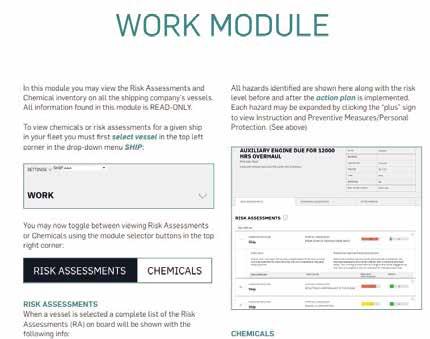
@SHORE MANUAL
Guide to @SHORE, including creating a shipping company, chemical administration users, designing the company's positive list, adding and editing chemical products, fleet overview, and access to the ships' risk assessments and chemical inventory.
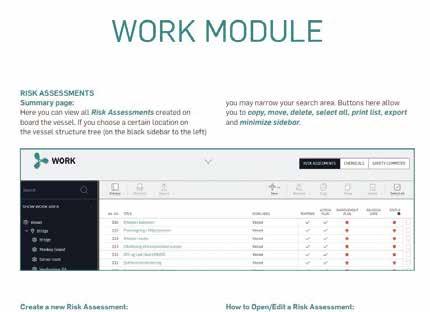

We have a new paint brand on board and have discovered no MAL code labeling on the cans. We know that if we buy the paint from Denmark, there must be labeled on the cans, but do the same rules apply when we buy the paint in Asia, for example?
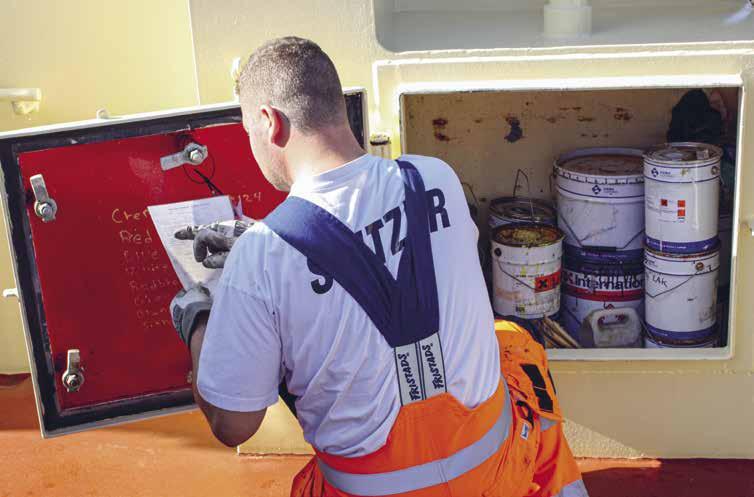
Regards
Capt. Jørgen Andersen
Thank you for your inquiry.
Yes, the rules apply regardless of where the paint is produced. Please note that code numbers have replaced the term MAL codes, but the rules are essentially the same. In Executive Order 1246 of 11/12/2009 on Notices from the Danish Maritime Authority A, Technical regulation on the work environment in ships, Chapter II B rule
4 states
1. The master shall ensure that a product, cf. regulation 1(3) and (4), is provided with a code number before being used.
2. The code number of a product shall be clearly indicated on the packing or be given in writing in some other way. The year when the Order issued by the Danish Working Environment Authority in force at any time according to which the code
number has been determined shall be indicated together with the code number.
3. The code number shall be given in the workplace user instructions that must be drafted according to the provisions of chapter II, part A, on substances and materials used on board ships.
4. As regards substances and materials covered by regulation 1(4), the supplier and workplace user instructions shall also contain information about whether the substance and the material contain epoxy resins, monomeric epoxy compounds, reactive solvents, or isocyanates as well as about the hardening time of the substance or material.
5. In the case of a product where a mixture of more components or addition of a diluent is prescribed, the master shall ensure that a code number has been determined both for each individual product and for the mixture when ready to use.
6. In the case of a product where use at a specific temperature is prescribed, a code number shall be determined both for the product at room temperature and for the product at the prescribed temperature.
7. The packing or the notice about the code number shall also contain information that the breathing mask shall be air-supplied if a product contains liquids that boil at low temperatures (substances with a boiling point below 65 C as well as a number of other substances that absorb poorly on
charcoal filters) and if it is necessary to wear a breathing mask as a protection against the inhalation risk when working with the product.
The code number must either be visible on the product or otherwise stated in writing.
We recommend that you write the current code number on each tub of product so that everything is clear about which code number applies to which product. Alternatively, you can write the code number on the front of the shelf so that you can see that all the products that have the indicated code number are placed there.
We also encourage you to have a code number chart in the paint shop so the crew can quickly get an overview of which protective equipment to use.
I hope this answers your question. Otherwise, you are welcome to write again.
Regards
Ester Ørum, consultant.Read more about Code numbers and labelling of chemicals on shw.dk under Health and Safety and Chemicals

We have updated and renewed our Point Extraction Sector Specific Guidance, replacing the previous version from 2001.
The new guide contains both technical descriptions and practical examples of the installation, use and maintenance of point extraction. There is also an increased focus on the use of point extraction in non-fixed workplaces.

The sector specific guide, which can be used as a reference work, has been consulted by the maritime industry, including shipping companies, employers’, and workers' organizations.
All ships that have previously purchased a starter kit can receive a Danish and English version of the new guides on 'Point Extraction and Drinking Water' – Ships Guide free of charge. Simply send an email to info@shw.dk with the following text in the subject field: "Yes to the new Point Extraction Guide / Drinking Water – Ships Guide". Remember to include the name of the ship and a recipient address in the email.
If your ship has not purchased a starter kit, you can buy the guides in our webshop, where you will also find a wide range of other products relevant to Danish-flagged vessels. Find the webshop on shw.dk/webshop
Clean drinking water is a particular challenge on board a ship. It is essential that the water produced or loaded on board is clean and that tanks and pipe systems are also clean.
This is why there are regulations for drinking water quality on board.
This guidance tells you how to do so in practice, i.e., how the captain, chief engineer, and the rest of the crew can ensure that drinking water quality is satisfactory and complies with applicable requirements.
www.shw.dk/webshop
The EU Drinking Water Directive has been reassessed, and the new limit values are listed in the guidance. The Danish Maritime Authority has changed the rules on food and drinking water. Shipping companies must now measure for relevant heavy metals (including Lead, Cadmium, and Chromium) when they take delivery of a new ship. On the other hand, there is no longer a requirement for pipes and taps to be VA-approved.
Another new feature made possible by the new drinking water guidelines is using chemicals other than chlorine for disinfection. However, these products must be approved by the Danish Veterinary and Food Administration


The winners of the Photo competition for Seafarers, for all seafarers aboard Danish-flagged ships, have been found.
The winner of the 2022 Photo competition for seafarers on Danish-flagged ships is Rasmus Christoffersen, an AB on the vessel NAJA. The judges have named the photo "Cable-laying Ship" and note that it is a picture of deck work with life and movement.
"The image invites the viewer to participate in the interpretation, moving between the concrete and the abstract. Not everyone can see that it is cable work, but everyone can enjoy the colors and expression of the picture. Photographically, the image is sharp and contrasty with complementary colors," the judges said.
The Danish Maritime Foundation sponsors the prize of DKK 5,000.
In 2022, SEA HEALTH & WELFARE received 336 photos from 50 photographers for the photo competition for seafarers on Danish-flagged ships.
Judges for the Danish competition are Royal Arctic Line chief officer Kim Eggers, photo teacher Jens Kostrup and photographer Olle Thorup.
"This year's photos are again an exciting selection. We have looked at composition and taken into account the graphic challenge, but at the same time, we have wanted to find pictures that also tell a story," says the trio of judges and continues:
"There are images that describe the daily work at sea and images with artistic and dreamy expressions. The images range from the concrete and realistic to the abstract and fanciful."
The competition awards 1st to 5th place.
THE 2023 PHOTO COMPETITION IS ALREADY UNDERWAY
Consultant Irene Olsen from SEA HEALTH & WELFARE, who is responsible for the photo competition, hopes that many seafarers will also want to participate in the 2023 competition. "You can already submit your photos. We look forward to receiving a lot of great photos in 2023 with exciting and different motifs of life at sea," says Irene Olsen.
You can find more information and rules on our website, shw.dk, under Welfare.




 5th place: Photographer: OS Nathan Josefsen, MALERAQ ARCTICA
The winner: Photographer: AB Rasmus Christoffersen, NAJA
2nd place: Photographer: OS Kamma Hjortkjær, ESVAGT ALBERT BETZ
3rd place: Photographer: Second engineer Peter Brunk, CROWN SEAWAYS
5th place: Photographer: OS Nathan Josefsen, MALERAQ ARCTICA
The winner: Photographer: AB Rasmus Christoffersen, NAJA
2nd place: Photographer: OS Kamma Hjortkjær, ESVAGT ALBERT BETZ
3rd place: Photographer: Second engineer Peter Brunk, CROWN SEAWAYS
When seafarers submit their best photos to the Seafarers' Photo Competition, imagination have no bounds. For that we are pleased, and we would like to honor more of the good photos. That's why we are changing how we award prizes in the Danish Seafarers' Photo Competition.
THIS YEAR, WE WILL RECOGNIZE WINNERS IN THREE CATEGORIES:
• Nature (Storms, sun and clouds, sea, animals, and birds)
• The maritime environment (The ship, the port, wind turbines, etc.)
• Life on board (Both leisure and working time).
One winner will be selected in each category, and the final winner will be chosen from among them.
The judges can decide which category a photo belongs to. You may also write which category your photo belongs to when you send it to us.
THE PRIZES ARE:
DKK 4,000 to the overall winner of the Danish Photo Competition for Seafarers.
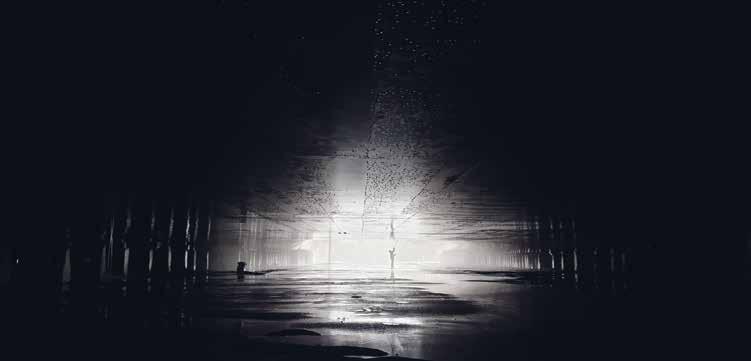
DKK 1,000 to the winner of the Nature category.
DKK 1,000 to the winner of the Maritime Environment category.
DKK 1,000 to the winner of the Life on board category.
DKK 500 for a photo that stands out in the judges' opinion.
TIPS FOR PHOTOS SUBMITTED TO THE PHOTO COMPETITION: Pay attention to the subject's focus, colors, depth, foreground, and background.
The maritime work environment Photo: Tommy KristiansenPeople are very welcome in photos, but photographed before submitting it to the competition you should make sure that they accept that the photo can be seen on shw.dk and our social media.
What you can edit:
• Straighten your horizon if it's crooked.
• It's okay to change the colors a bit.
• You can crop your image.
What you can't edit:
• Panoramic photos are discarded; use a "regular" format.
• Submitted photos must be without text or tags printed on the photos.
• Do not copy new elements into your photo.
Please note that the safety rules of the shipping company must always be respected, even when taking photos.


WANT INSPIRATION TO BECOME A BETTER PHOTOGRAPHER?
Register with The Seafarer's Library. Here you can find many magazines on photography and how to become a better photographer.
Read more about how to sign up as a patron at www.sbib.dk.
Life on board Photo: Karl Paolo B. Dote Nature




The 2022 Nordic Photo Competition was held in Haugesund, Norway. The judges were press photographer and streaming editor at Haugesund newspaper, Alfred Aase, and Jan Kåre Ness, a freelance photographer responsible for the Haugesund Photo Festival.
The prizes for 1st to 5th place are sponsored, and the Danish Maritime Accident Insurance Association sponsors the winning prize of DKK 5,000.
The Nordic Photo Competition will feature 15 images from Iceland, Norway, Sweden, Finland, and Denmark, selected by the judges of the national photo competitions.
You can find more information on our website, shw.dk, under Welfare.
The winner of the Nordic Photo Competition for Seafarers is ship's cook Jörgen Språng, MT BIT OKLAND, Sweden.
JUDGES' ASSESSMENT:
"As a starting point, it is a somewhat arranged picture but contains many elements. The size ratio comes out thanks to the person in the foreground. There is so much content here, and it was an early favorite. Some lines create symmetrical triangles, which often make an image photographically interesting. There are also contrasts between the hull and the illuminated propeller. We can also see that the propeller is mirrored in a bit of the rudder. Although it looks like the person is placed in the photo on purpose, it could still be someone inspecting something. The image gains a lot by showing the little person in a great environment."
SEA HEALTH & WELFARE spoke to Jörgen Språng, winner of the Nordic Seafarers' Photo Competition. He always has his camera close at hand, and with the help of his colleagues, he is often there when something exciting happens on board.
By Troels Leth, SEA HEALTH & WELFAREHow long have you been interested in photography and why?
My first camera, given to me as a birthday present in the late 70s, was a Kodak Instamatic equipped with a flash cube that could be used four times. I remember how exciting it was waiting for the first roll of film to be developed.
When I was maybe 12 years old, I inherited my father's old Yashica J5, and then photography immediately became more interesting as the result and quality of the pictures improved. But, the real interest came when in 1989, at the age of 18, I travelled with the Trans-Siberian Railway to China. I bought Canon's first EOS camera before the trip, and it came with the incredible innovation "autofocus" - it was a fantastic camera!
The cameras have always been with me on that trip and all subsequent travels, on land and sea. There have been many, many travels and many, many pictures
since then. My only souvenirs from all the countries I have visited are photographs.
What do you do to be in the right place to take such good pictures at the right time?
I usually tell my colleagues that if something exciting or unique happens on board, they can let me know, and I'll be there. Then the composition and the picture emerge as the work progresses. For example, tank cleaning, work in the ballast tanks, and repairs in tight, difficult places make it extra interesting to photograph.
What do you think is special about taking pictures on the ship compared to when you are at home?
At home, I often plan a photo day with all the time in the world, and I know what to expect. When I'm on board, it's usually quick jumps to different situations, as it is rare that all the exciting things happen during my breaks, and then I can have a hard time keeping up. Sometimes I'll slip
away for 5 minutes while cooking if the situation is worth a picture, but it would be embarrassing if a good picture is the cause of burnt food!
How much time do you spend taking photos in general?
When I'm at home and have time off, I like to go on a day trip in nature with my camera, tripod, and coffee. On board, I take photos quite regularly, usually a few photos daily.
I take even more pictures if something special is happening, like planned work in the engine room, on deck, or now, when we're in the shipyard in dry dock. It's an excellent place for my favorite kind of photography because things happen everywhere. The industrial environment with hard work, welding, steel, rust, and a generally hectic environment greatly appeals to me. I do a lot of photography here during breaks.
What are the top 3 pieces of advice you can give to others who want to take good photos at sea? 1. 2. 3.
Ask what's going on. Ask colleagues to inform you if any extraordinary work is going to be done. Ask people on the bridge to contact you if whales or something rarer shows up.
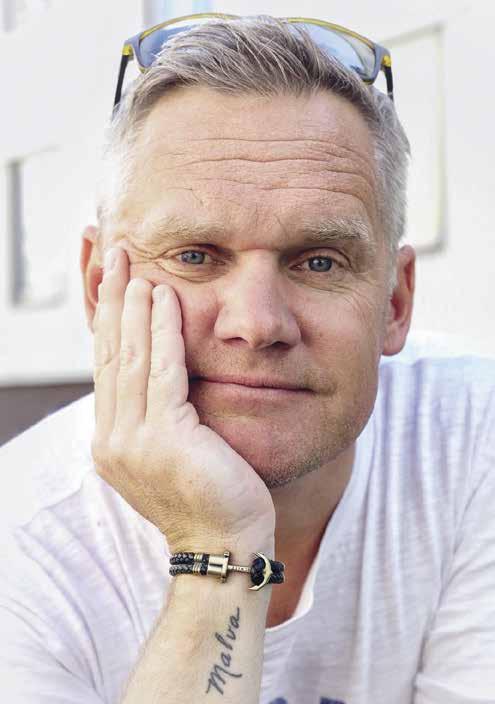
Don't be comfortable! Put on your overalls or rain gear and follow your colleagues into the ballast tanks or other hard-to-reach places - the more exciting the environment, the more compelling the pictures.
Consider the composition. You may need to back up a little to bring more into the picture. Or move closer and make the image more minimalistic. Everything is ultimately a matter of taste, but think further; how can you change the composition and make the image more interesting? Take your time if the situation allows it. Feel free to break the typical photo rules.
As a seafarer on a Danish-flagged ship, you can get a library card to The Seafarers’ Library, which gives you access to electronic books, audiobooks, and many magazines. Find the Seafarer’s Library in the app Libby.

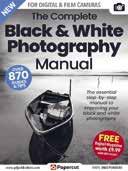



In this magazine, you can see the winners of The Danish and The Nordic Photo Competition for Seafarers. Should you feel inspired to take great photos yourself, help is near!
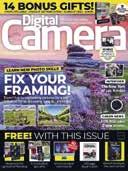

In the electronic part of The Seafarers' library found in the app Libby, you can find more than 60 magazines that offer tips and guidance for photographers on any level. You can find magazines on how to take better portraits, how to improve your outdoor photography, learn how to take close-up pictures, and you can also learn how to take better pictures in black and white.
To be able to borrow the magazines – and all the other magazines and books in The Seafarers’ Library – you need to create a personal user that works like a library card.
Read more about registration at the library’s website at www.sbib.dk
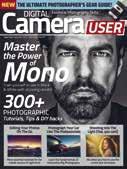
Does the metaverse actually exist, or is it just a marketing ploy? What’s going on with AI-generated art? Is the era of social media over, and what’s going to replace it?
Questions like these need answers. Hard Fork is a new podcast from The New York Times hosted by journalists Kevin Roose and Casey Newton that explores stories from the wild frontier of tech and the future that’s already here. In each episode the hosts explore and make sense of the latest in the rapidly changing world of tech.

Check it out here
https://www.nytimes.com/2022/10/04/podcasts/ hard-fork-technology.html

The podcast for all horror fans! This podcast is a movie discussion podcast that covers the history of horror cinema, one sub-genre at a time. From Universal Monsters to ‘80s slashers, from Alfred Hitchcock to Jordan Peele, it is covered here.
In each episode, host Mike Muncer is joined by a different guest from the world of horror to discuss a movie in depth and its place in horror history. The show collects the episodes in different categories: Slashers, Ghosts, Folk, Zombies, Occult, Mind and Body, Aliens, Vampires, Home, and a Bonus category that collects interviews, revisiting movies, Valentines special etc.
Check it out here
https://www.evolutionofhorror.com/
At SEA HEALTH & WELFARE, we have decided that we need a new design for our Equator and Polar Baptism certificates. We have decided to turn this into a competition that is all about being creative.
Find your creative skills and help create the baptism certificate of the future with e.g., King Neptune and other maritime figures and themes.
The prize can be up to DKK 5,000 if your entire drawing is selected for our new baptism certificates. Every participant will receive a t-shirt.
Read more about the competition and the prizes on SEA HEALTH & WELFARE’s website shw.dk and our social media.
We look forward to seeing your creative drawings!
Find inspiration from SEA HEALTH & WELFARE’s current Equator and Polar baptism certificates, where King Neptune and other maritime symbols are represented.

Hos SEA HEALTH & WELFARE har vi besluttet, at vores Ækvator- og Polardåbsattester trænger til et nyt udtryk.
Vi har vi valgt at gøre det til en konkurrence, hvor kreative søfarende kan byde ind med deres bud på nye, flotte attester.
Find dine kreative evner frem og vær med til at skabe de nye dåbsattester – fx med Kong Neptun eller andre maritime figurer og temaer.
Her er de nuværende Ækvator- og Polardåbsattester, hvor Kong Neptun og maritime symboler er fremhævet. Du er velkommen til at bruge dem som inspiration.
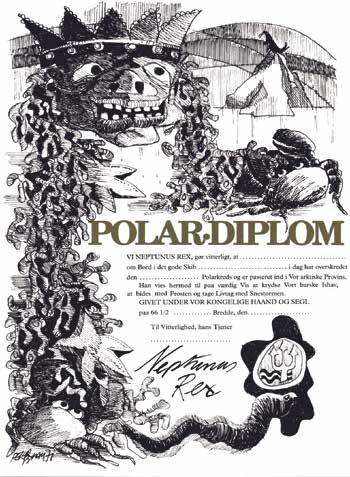
Præmien kan være op til 5.000 kr., hvis hele din tegning bliver udvalgt til vores nye dåbsattester, og der vil være en t-shirt til alle, som deltager.
Læs mere om konkurrencen og præmierne på SEA HEALTH & WELFARE’s hjemmeside shw.dk og på vores sociale medier.
Vi glæder os til at se jeres kreative tegninger!